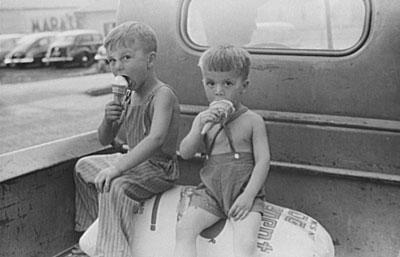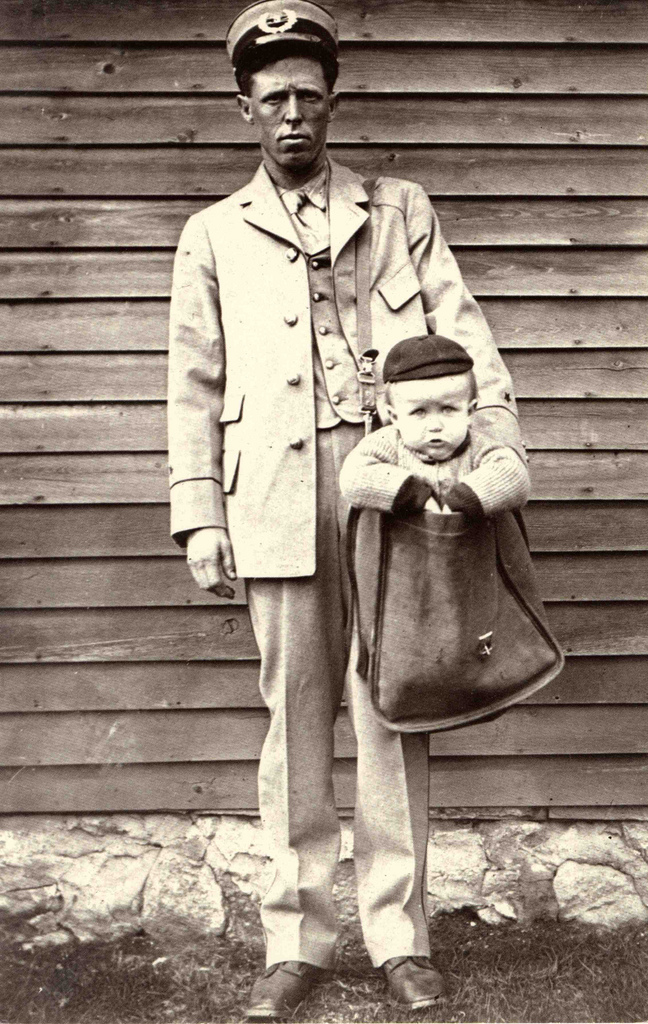I recently ran across an article with the photographs above that stated it was legal to mail children through the mail until 1913. and a reader validated the article somewhat when he wrote a story about traveling with the mailman to his grandparents in “Sand Mountain Memories,” on Alabama Pioneers.
I found it hard to believe that people would put that much trust in the mailman so I decided to research this fact a little further. On the Smithsonian website and Snopes.com and I found there is some truth to the story.
The following has been abstracted from both websites.
In the early years of Parcel Post service, before the U.S. Post Office implemented more specific regulations, people shipped all sorts of unusual things by mail — including, as suggested above, babies and small children. However, it was neither a regular occurrence nor a routine aspect of the Parcel Post service for people to wrap up children, slap some stamps on them, and ship them cross-country — the few documented examples of children being sent through the mail were nearly all publicity stunts, instances of people who knew the postal workers in their area asking them to carry their babies a relatively short distance along their routes to some nearby relatives, or cases in which children were listed as ‘mail’ so they could travel on trains without the necessity for purchasing a ticket.
As early as 17 January 1913, just a few weeks after the introduction of the Parcel Post service, the New York Times reported that the Postmaster General was considering (humorously or otherwise) the propriety of sending infants through the mail and noting that postal regulations did not allow for it:
The mailing of babies by parcel post is a real infant industry which Postmaster General Hitchcock is asked to foster.
In the circumstances of his bachelorhood Mr. Hitchcock is considering seriously the calling into consultation of experts in the transportation of babies, as a letter which he received to-day presents to him a mail problem with which he is quite unfamiliar. To add to his embarrassment the letter contains a note of genuine pathos, which appeals strongly to the Postmaster General.
This is the letter, identically as it was phrased and punctuated:
Fort McPherson, Ga.
Postmaster General,
Washington, D.C. — Sir: I have been corresponding with a party in Pa about getting a baby to rais (our home being without One.) May I ask you what specifications to use in wrapping so it (baby) would comply with regulations and be allowed shipment by parcel post as the express co are to rough in handling.
The name signed to the letter is withheld at the request of Mr. Hitchcock.
As babies, in the opinion of the Postmaster General, do not fall within the category of bees and bugs — the only live things that may be transported by mail — he is apprehensive that he may not be of assistance to his correspondent.
Nonetheless, two weeks later the Times reported that a mail carrier in Batavia, Ohio, had delivered a baby sent by his parents to a grandmother who lived about a mile away:
Vernon O. Lytle, mail carrier on rural route No. 5, is the first man to accept and deliver under parcel post conditions a live baby. The baby, a boy weighing 10-3/4 pounds, just within the 11 pound weight limit, is the child of Mr. and Mrs. Jesse Beagle of Glen Este. The boy was well wrapped and ready for “mailing” when the carrier received him to-day. Mr. Lytle delivered the boy safely at the address on the card attached, that of the boy’s grandmother, Mrs. Louis Beagle, who lives about a mile distant. The postage was fifteen cents and the parcel was insured for $50.
And a year later, the Times reported a similar instance of a small boy’s being shipped by his grandmother from Stratford, Oklahoma, to an aunt in Wellington, Kansas, via Parcel Post:
Mrs. E. H. Staley of this city received her two-year-old nephew by parcel post to-day from his grandmother in Stratford, Okla., where he had been left for a visit three weeks ago.
The boy wore a tag about his neck showing it had cost 18 cents to send him through the mails. He was transported 25 miles by rural route before reaching the railroad. He rode with the mail clerks, shared his lunch with them and arrived here in good condition.
Several other instances of children being transported by Parcel Post were reported in the press over the next few years before the Post Office finally clamped down on such occurrences for good, with the Times reporting that:
Children may not be transported as parcel post, First Assistant Postmaster General Koons has ruled in passing upon two applications received at the Washington City Post Office for the transportation of children through the mails.
Mr. Koons said children did not come within the classification of harmless live animals which do not require food or water while in transit.
One of the applications received by the local Postmaster was from a 9-year-old girl, who entered the main Post Office and asked that she be sent to Kentucky.
The photographs with the children in the mail-pouches is a staged piece. However, the photograph from the Sand Mountain article above is one I found at the Library of Congress. It seems that in an era when transportation was expensive, sometimes mail carriers delivered young children to friends relatives! Now that is putting some real trust in your mailman.



